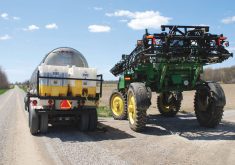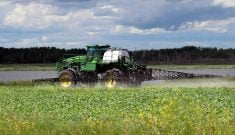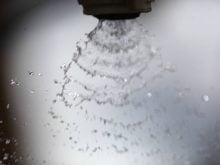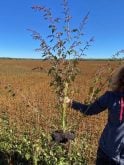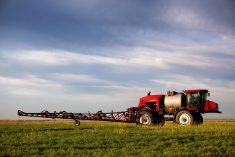A host of seemingly unrelated incidents including another round of COVID-19, the upcoming Winter Olympics and the current world supply chain issues have brought about an odd perfect storm.
The component chemistries that make up herbicides are harder to get, so herbicides are not as plentiful and they’re more expensive. Consequently farmers may have to rethink how they manage weeds this spring.
“We know that prices have increased, particularly for glyphosate which is approximately three times what it was a year ago,” according to Tom Wolf of Agrimetrix in Saskatoon. “It does suggest that there is, if not an outright shortage, a price barrier for the use of the product and that’s going to affect other products as well.”
Read Also
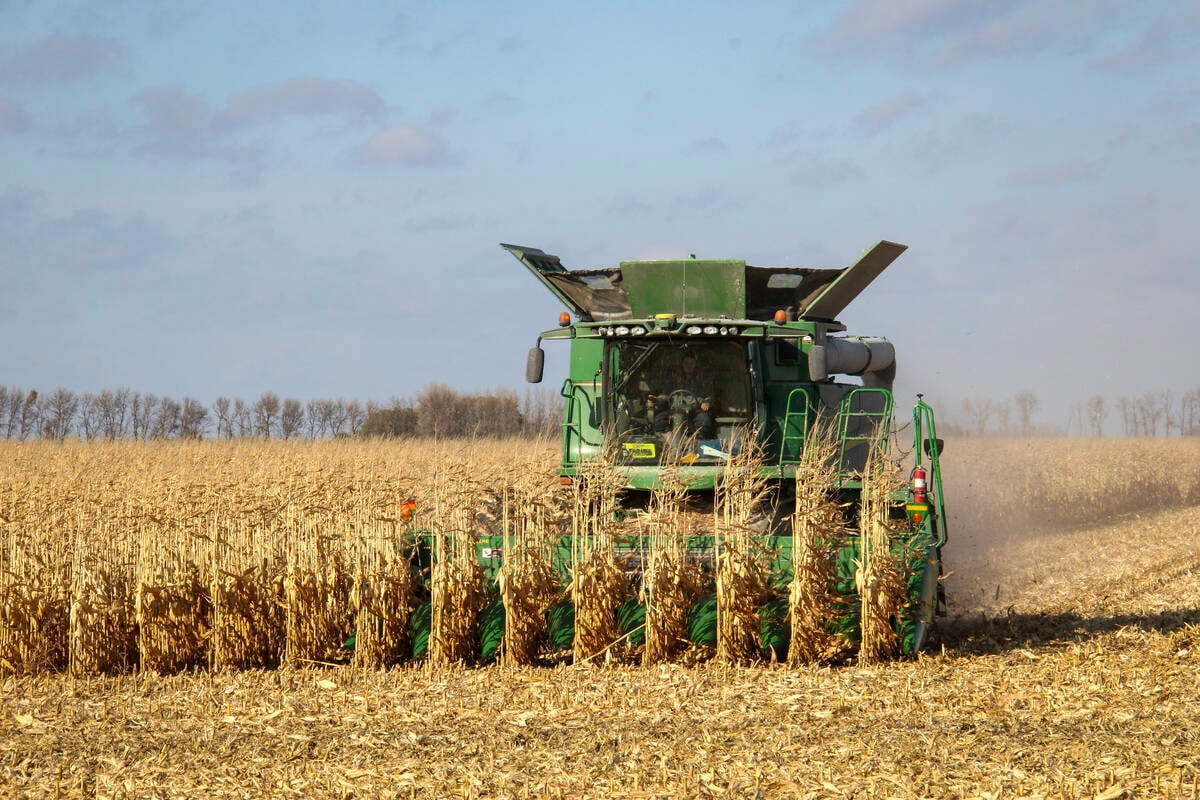
Manitoba corn research looks for home-based weed control
University of Manitoba researchers want corn growers to have Manitoba-based weed control advice, not U.S. or Ontario-based recommendations.
“It’s a worldwide issue and we’re definitely short of some of the big chemistries that we use in Western Canada,” says provincial weed specialist Kim Brown-Livingston. “Glyphosate, glufosinate and a number of other pesticides will be in short supply as well.”
Manitoba farmers can put the long winter to good use by planning this spring’s weed management strategies around a herbicide shortage. Both Brown-Livingston and Wolf will tell you the best herbicide you can get is a good start on a healthy, competitive crop building quickly to a good canopy. This year’s weed control strategy will come down to acquisition, adaptation and application.
“It may mean that you can’t get everything that you plan to use,” Wolf said. “It’s hard to predict who will have access to what product, who has what relationships and who has what inventory in store.”
There are farmers out there with more than one year of inventory and, with the facilities to store it. They may actually be able to sit this out and hope the prices will come down next year once the stocks go up again. Others may have to scramble a bit.
“Relying on the relationship you have with your input supplier is really important,” Brown-Livingston said. “You’re going to have to book it, buy it and take it home when you can so have those conversations and make sure they know what your needs are. That’s the only way you know you’re going to get it.”
This will also be true of input retailers as they start pressing their suppliers who may or may not be able to fill their orders. If that’s so, farmers will have to be nimble in their approach to weed control. They may have to adapt some of their standard practices, cut corners and find some creative alternatives.
“We tend to use glyphosate in the spring and again in the fall for weed control,” Brown-Livingston said. “You may be able to get away from that depending on your weed spectrum.”
She also suggests looking into strategic tillage as a possibility although she also cautions that this would be after a dry summer and it may also compromise carbon credits. If done it should be done judiciously.
Changing up the chemistry may be necessary too. She suggests farmers think about some of the residual herbicides and rely on their residual nature to take out weeds and buy them more time.
“Lots of times that really lessens the need for an in-crop herbicide so we can just do one in crop instead of two,” she said. “And that’s something that can be sprayed very early and I think that’s something farmers really need to look at.”
For example, this may be the year for an Xtend soybean crop. It can be planted early along with a glyphosate/dicamba herbicide combination. It will control weeds early and then make use of the residual effect to lessen the impact of the next flush. The idea is to buy time for the canopy to close so the soybeans can outcompete the weed spectrum.
“Again, if we’ve got a herbicide shortage coming at us that’s something that we need to take a look at,” she said. “We have so many soybean acres and this is another tool that we can use that can work really well.”
The last third of the trilogy is in the application, getting the product into the field so it can do the best job it can. That starts with a well-tuned sprayer, the tank filled with the right amount of good water and the boom fitted with the right nozzles.
Wolf said Agrimetrix decided to take a look at how farmers might get better use out of them and the product they spray.
“What we did was we analyzed where product goes in a typical spray operation and we did some modelling,” he said. “We built a spreadsheet around where we think we lose material along the way and I was very surprised how large the numbers actually were.”
They started with a baseline scenario where a farmer would spray one quarter section. At 10 gallons an acre that’s 1,600 gallons of spray. The first thing they modelled was the act of priming the boom.
“If you run the boom for one or two minutes we are assuming that about two-tenths of a gallon per foot of boom goes on the ground which means about 24 gallons,” he said. “It’s a bit of a guess but it’s an educated guess I would say.”
The next part of the scenario involved driving the sprayer over the field and, even with GPS auto steer, the sectional control of the boom is quite coarse. This actually led to a fair amount of overlap.
“Our numbers indicate that about four per cent of our sprayed area is double sprayed because of that coarse sectional control,” he said. “And, because we spray under certain conditions with certain nozzles with a certain amount of drift, our numbers indicate that about two per cent of the sprayed area can be drift loss.”
Following that is the amount lost during the cleaning which can be as much as 48 gallons and, if there’s any product left over after spraying, this can add up. Even with seemingly acceptable waste in each part of the process, this all produces fairly large numbers at the end.
“It doesn’t sound like much but when you add all these numbers together,” Wolf said. “Remember now, we’ve sprayed 1,600 gallons, 10 gallons per acre on 160 (acres). We’ve put 228 of those onto the ground or into the air. That’s 14 per cent. It’s a high number.”
Real farmers may actually produce better numbers than their theoretical counterparts and there are some ways they can do even better. One of the fundamental problems they need to address in a time of shortage may be a simple one. We need more accurate tank measurement.
“It seems to be the most fundamental thing we need to be doing extremely well and we’re doing it quite poorly,” he said. “You have a sight gauge on the side of the spray tank. This is the crudest possible way of figuring out how much is in your tank. It’s, at best, accurate within the closest 50 gallons, so right off the bat you have a five per cent error.”
Wolf recommends something like the Accu-Volume system that gives an accurate reading of the amount of product in the tank. That would give a farmer a much better idea of what’s actually in there. That means an operator can make a more accurate calculation of what is needed with less product left over.
Then there’s a recirculating boom. With a standard boom the product only has one way out and that’s through the nozzles. With a circulating boom, any of the herbicide that doesn’t go through the nozzles is redirected back into the tank. That means you don’t lose any product when you prime the boom. Last, we could have better sectional control over future booms giving us less overlap.
“So whatever pesticides we are able to use we should use them well so they’ll last longer and do a better job when we spray them,” Brown-Livingston said. “It’s really important to do a really good job of spraying when you get that rig in the field and you start spraying.”
If you have concerns or need ideas consult your agronomist and your input retailer. They’re there to help.
If you want to know more about sprayers and how to get the best out of yours have a look at Tom Wolf’s site, sprayers101.com, starting with this page.



